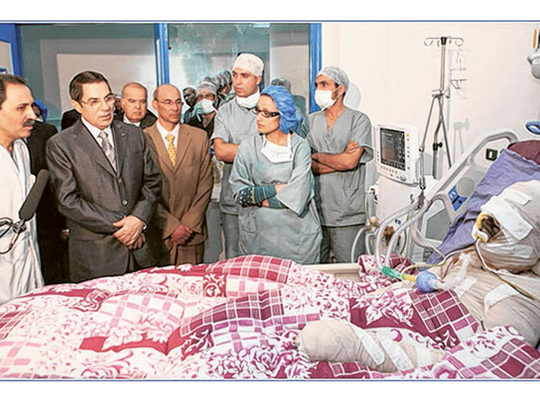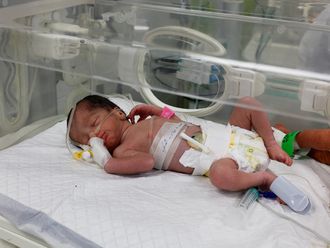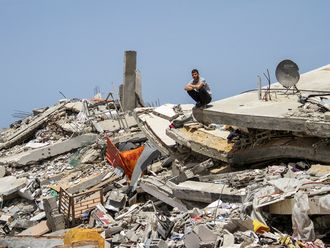
Mohammad Bu Azizi, a 27-year-old Tunisian man is credited for sparking what is known as the Arab Spring. Bu Azizi was born in Sidi Bouzid on March 29, 1984. His father, a construction worker, died when the boy was three. His mother, in keeping with a local tribal tradition, married her former husband's brother.
Bu Azizi, known as Basboosa, had to help support his family and he quit school to work as a street vendor. His friends, frustrated by the lack of opportunities, left the town to work in coastal cities. He remained in Sidi Bouzid.
On December 17, Bu Azizi was selling fruit and vegetables off his cart when an inspector from the local municipality came to check his papers that allowed him to carry on with his business. Reports varied vastly on the causes of the altercation that followed.
According to some people, the woman, Fadia Hamdi, tried to take away the scale that Bu Azizi used to weigh fruits. This resulted in a cut on her hand so she slapped him in anger.
Others said that Bu Azizi insulted her and she reacted by slapping.
In a third version Fadia did not slap Bu Azizi, but insulted him.
Regardless of the version, the conflagration across the Middle East was set off.
Bu Azizi went to the governorate building to report the case, but nobody wanted to listen to his grievances. Frustrated, he left the building, poured petrol on his body and set himself ablaze. Within seconds, he collapsed, consumed by the fire, as people shocked by the sight did not readily provide help. He was later taken to a local hospital, then to a larger hospital in Sfax, Tunisia's second largest city. He was later transferred to Ben Arous in the suburbs of the capital, Tunis.
People, angered by Bu Azizi's self-immolation, began to assemble in front of the governorate building where policemen and guards tried to push them away. However, the crowd saw the lack of compassion on the part of the police, just minutes after the tragedy, as an insult and pent-up feelings of anger with the authorities were unleashed.
The crowd refused to move away, but eventually moved to form a rally calling for justice. It was the beginning of a movement that soon spread to neighbouring towns and villages before it engulfed central and southern Tunisia. Acts of arson became common, targeting mainly public offices. Tunisia's national TV was slow to cover and condemned the arson attacks. Nothing was even mentioned about the people's anger.
The relentless demonstrations moved up to the capital, home of one fifth of the nation's population of 11 million.
The Habib Bourguiba Avenue, the Tunisian Champs Elysees, became the epicentre of the massive demonstrations as protesters shouted their new war cry, "Degage" (Get out), towards the interior ministry, the most potent symbol of repression, and the RCD, the ruling party that stifled Tunisians.
An attempt by the then president Zine Al Abidine Bin Ali to calm the situation by visiting Bu Azizi in the burns unit of a dedicated hospital in Ben Arous, in the southern suburbs of Tunis, and his pledge to give funds to his family failed to rein in the crowds.
It however produced a poignant moment in the revolution when the national television showed the two men in the same room: the president who ruled the country with an iron fist for 23 years looking clueless at the motionless Bu Azizi wrapped entirely in white bandages as he lay dying, but not before sparking the downfall of the country's tormentor.
"The picture of Ben Ali, the symbol of oppression, standing before the young man who was turned by the fire into a mummy was crucial in unfolding events more quickly. People saw in Ben Ali's posture a confession of guilt," Fethi Bin Slama, a Paris-based Tunisian psychoanalyst, writer and clinical psychology professor, wrote in his book Suddenly, the Revolution. Bu Azizi died on January 4. Thousands attended his funeral. Ten days later, Ben Ali fled Tunisia.












